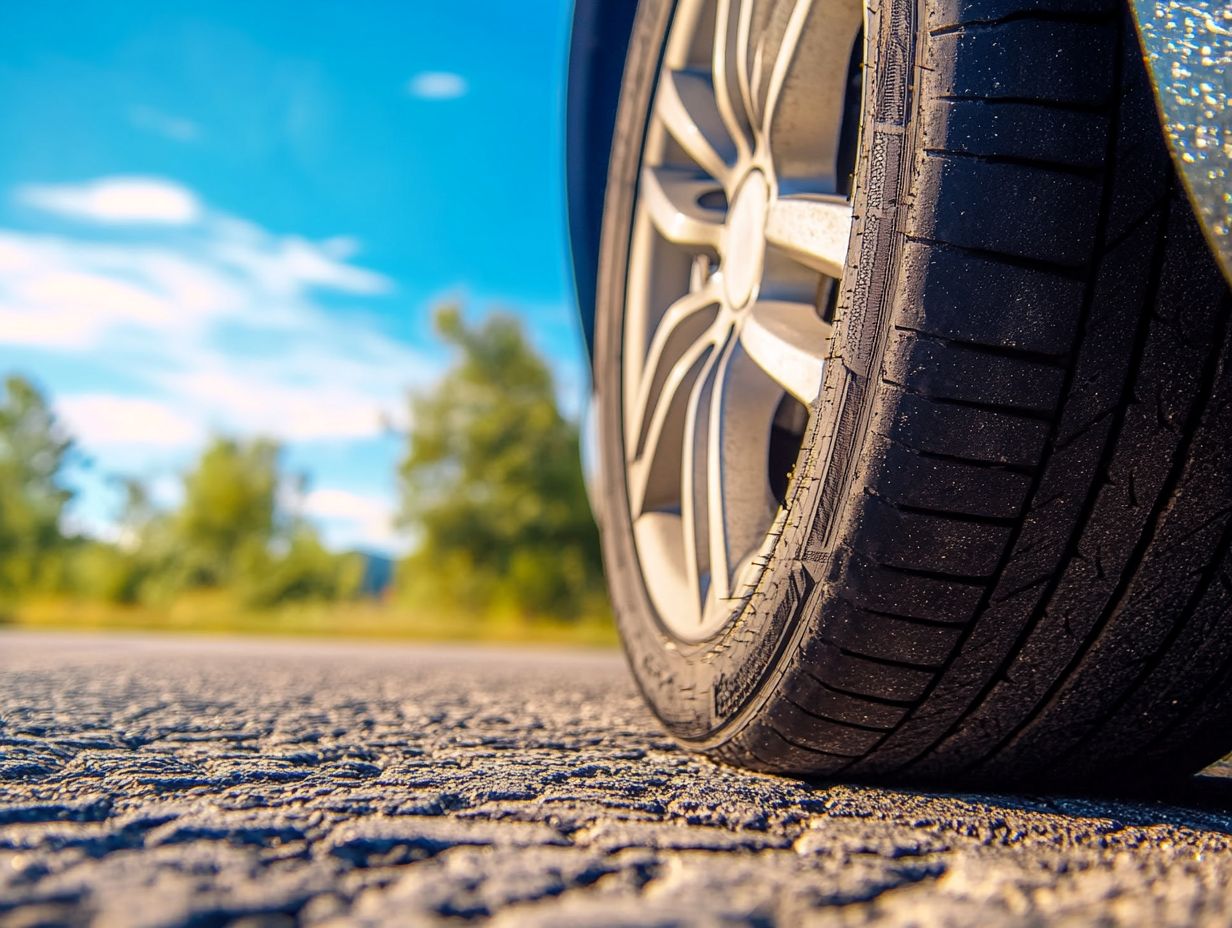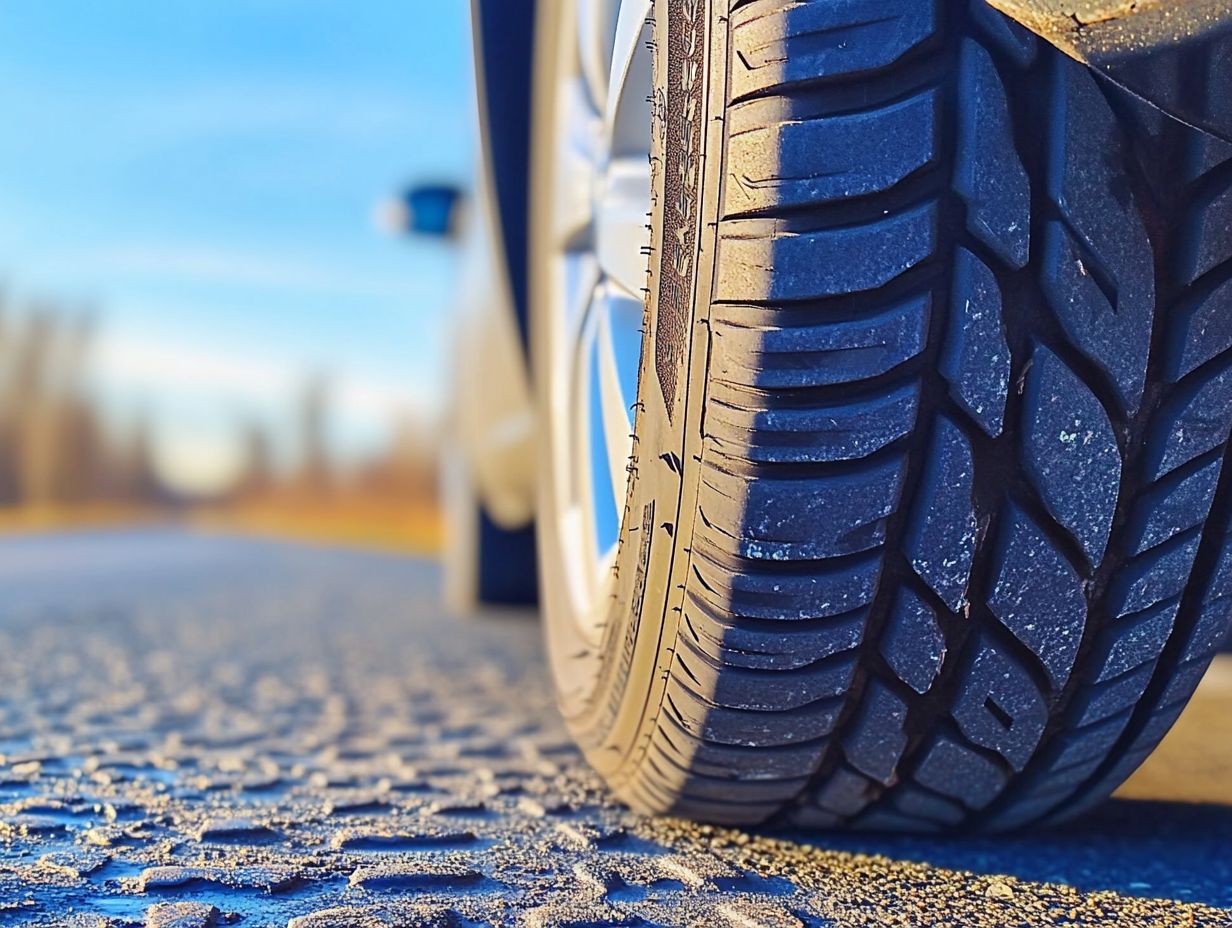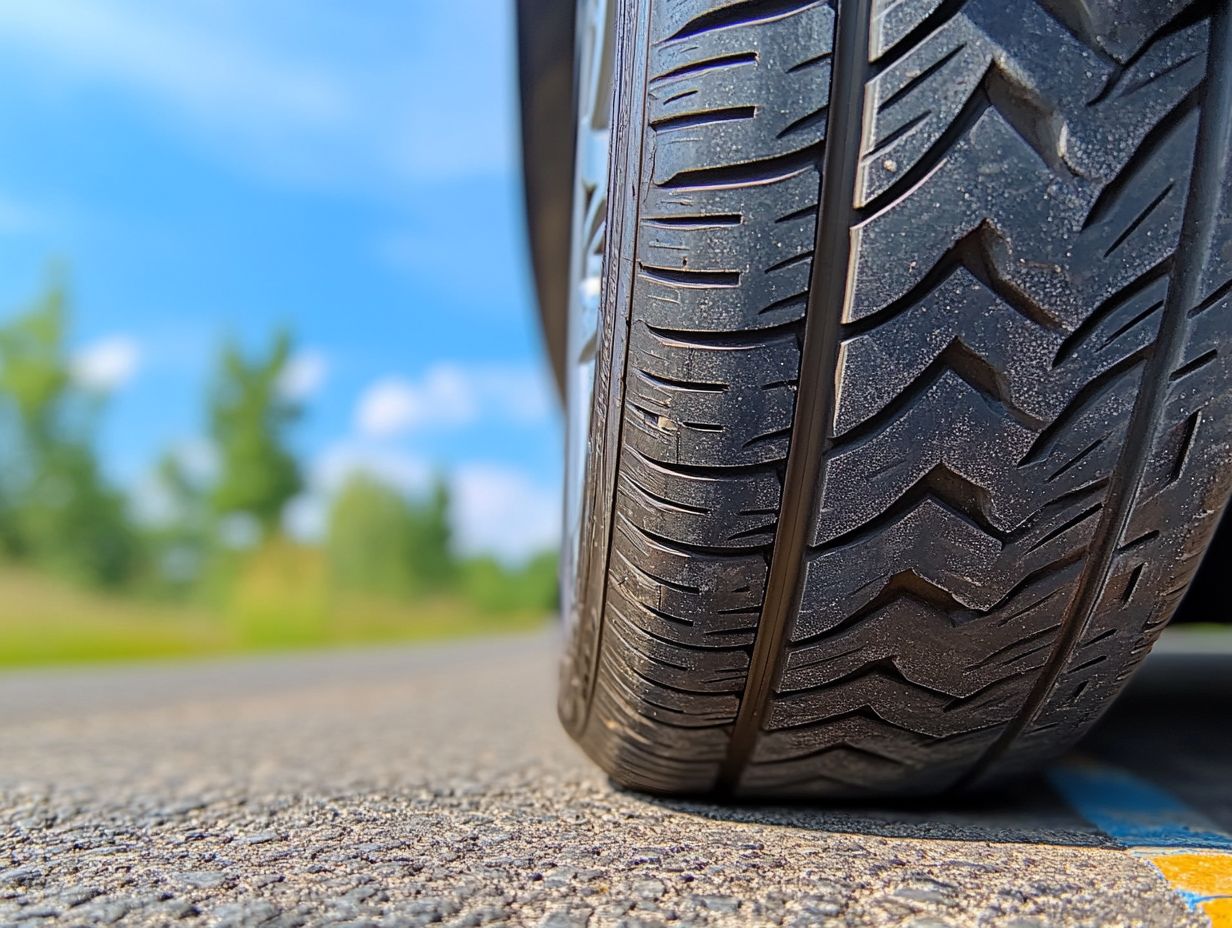How Fast Can You Drive On A Spare Tire? Know The Spare Tire Basics
When I find myself with a flat tire, having a spare tire is a total game-changer.
But I always wonder, how fast can I actually drive on one? This article dives into the essentials of spare tires, covering the different types out there, their pros and cons, and what might affect my speed when I’m driving on a spare.
It also gives some recommended speed limits and points out the potential consequences of going over those limits. Staying informed helps me keep safe and extend the life of my vehicle.
Understanding Spare Tires

Understanding spare tires is something every driver should really get a handle on. These temporary tires can be a total lifesaver when emergencies hit. Whether I’m facing a flat tire while on a road trip or dealing with a sudden breakdown, knowing how to handle a spare tire can make a huge difference in my driving experience and safety.
There are different types of spare tires, like compact spares and full-size spares, each meant for specific driving conditions and vehicle specs. When I get to grips with these details, it helps me choose the right tire for my vehicle and know what to expect in terms of performance and limitations.
Types of Spare Tires
In terms of spare tires, I’ve learned there are mainly two types: compact spares and full-size spares. Each one has its own vibe, suited for different driving needs and vehicle types. Compact spares are lightweight and meant for temporary use, while full-size spares are all about durability and handling. Knowing the differences can really help in picking the right spare tire for my car, making sure it fits my vehicle’s tire specs and driving style.
Compact spares, often called ‘donuts’, are perfect for cars with limited trunk space; they save a ton of room. But their smaller size does come with some speed and distance limits, so they’re really only good for short trips and lower speeds.
On the flip side, full-size spares are like having an exact replica of my regular tires, letting me drive normally without worrying about safety. It’s super important to make sure the spare matches my tires; using the right one means even weight distribution and better handling.
I also have to think about tire tread and inflation pressures because any inconsistencies could mess with safety and performance. In the end, choosing the right spare not only prepares me for unexpected bumps in the road but also keeps me safer overall.
Pros and Cons of Using a Spare Tire
Using a spare tire can be a bit of a mixed bag. On one hand, it gives me that much-needed temporary mobility during emergencies, but on the other, there are some limitations I need to keep in mind. The biggest perk is that it gets me back on the road quickly after a flat, but I have to consider the trade-offs in performance and durability, especially when it comes to how fast and how far I can drive.
For example, if I find myself with a flat tire, having a spare can be a lifesaver. It really can mean the difference between being stuck on the side of the road and continuing my journey. But I’ve learned that compact spare tires often don’t have the same durability as regular ones, and they’re really meant for short-term use—usually around 50 miles and at lower speeds.
Putting it on can be a bit tricky too, especially if I’m not familiar with changing a tire, which is why I always aim to be prepared. Keeping up with regular maintenance on the spare is important for reliability, but if I forget about it, I could end up with more problems down the line. Weighing the pros and cons of using a spare tire helps me make smarter decisions when emergencies strike.
Factors Affecting Speed with a Spare Tire
There are a few things I need to consider when it comes to how fast I can safely drive with a spare tire, and knowing these can really help me handle emergency situations better.
First off, the type of spare tire I have—whether it’s a compact spare or a full-size spare—makes a big difference. Plus, my vehicle type and weight come into play too.
Each of these factors affects how well the spare tire performs when I’m on the road, influencing handling and alignment, which are super important for staying safe and avoiding accidents.
Tire Size and Type

The size and type of my spare tire really affect how my car performs and my overall driving experience. A compact spare is lighter and great for short trips, but I often find that it sacrifices some stability and traction compared to a full-size spare. Knowing my vehicle’s specifications and the tire’s design helps me make the best choice in emergencies, ensuring I keep control and stay safe.
When I’m looking at tire options, I always think about how different sizes can impact handling. Larger tires tend to give me better grip, which means improved cornering and braking, while narrower ones often help with fuel efficiency.
I’ve also learned that different tread patterns are crucial for traction on various surfaces, whether it’s wet roads or off-road adventures. All of these factors play a big role in a vehicle’s overall performance, making it super important to choose the right spare tire with care.
By keeping these aspects in mind, I can ensure that my driving experience is not just safe, but also engaging and responsive.
Vehicle Type and Weight
The type and weight of my vehicle really matter when it comes to how well a spare tire performs and how safe I feel on the road. If I drive a heavier vehicle, it can put extra strain on a temporary tire, which might affect its load capacity and whether it’s even a good fit for my car.
Getting a handle on these details helps me make smarter choices about using my spare tire in emergencies and sticking to those inflation guidelines.
Plus, I can’t overlook how the design of my vehicle impacts performance and handling, especially in tough driving conditions. For example, my SUV or truck, built for rough terrain, probably needs a spare that can handle more weight compared to a compact car.
Things like tire pressure, tread pattern, and how long I use a spare can really impact overall safety. If I’m in a region with extreme weather, I’ll want to consider a spare that’s made for winter or all-terrain driving. That way, I can ensure the tire can adapt to different surfaces while keeping me stable and in control.
Recommended Speed Limits for Spare Tires
I know that being aware of the recommended speed limits for spare tires is super important for my safety and helps me avoid potential accidents on the road. Most manufacturers usually suggest a maximum speed of 50 mph when I’m using a temporary tire, but I always double-check my vehicle manual for the specific guidelines.
Following these driving rules not only improves how my car handles but also keeps me safer on my travels.
General Guidelines for Safe Driving
When I’m driving with a spare tire, I know it’s super important to follow some general safety guidelines to make sure my ride is smooth and safe. A few key tips I keep in mind include:
- driving at a slower speed,
- regularly checking the tire pressure, and
- being aware of how that spare tire changes how my vehicle handles.
I realize that spare tires often come with their own set of limitations when it comes to speed and distance, which can differ depending on the manufacturer. So, I make it a point to stay under the recommended speed limit, usually around 50 mph.
I also pay attention to how the vehicle feels because the handling can shift, affecting how responsive the steering is and how well the brakes work. It’s crucial to ensure that the spare tire is fitted properly and securely tightened to avoid any surprises on the road.
Plus, I always keep an emergency kit in my vehicle. It’s packed with tools and resources that can really come in handy when I run into tire troubles. By taking these practical steps, I can boost my safety and feel more confident when navigating those unexpected road situations.
Consequences of Driving Too Fast on a Spare Tire

I know that driving too fast on a spare tire can really backfire, not just for the tire but for my entire vehicle’s safety and performance. When I speed, it puts extra wear and tear on the spare, messing with its handling and increasing the risk of a blowout.
It’s important for me to understand the risks of high-speed driving so I can make smart choices and keep safety at the forefront while I’m on the road.
Possible Damage to Tire and Vehicle
Exceeding the recommended speed with a spare tire can really do a number on not just the tire itself, but also on my vehicle’s alignment and overall performance. When I push those high speeds, I’m risking excessive wear and tear on the tire, which can lead to losing traction and stability—both of which are pretty crucial for safe driving.
Knowing these risks helps me be more responsible when using a spare tire and reduces the chance of facing expensive repairs down the line.
When I drive too fast, I notice that the spare tire heats up quickly, which ramps up the risk of blowouts or tread separation. Plus, it can throw my vehicle’s alignment out of whack, leading to uneven tire wear and making steering a bit tricky. This can really compromise handling, making maneuvers more difficult and potentially dangerous.
All these factors can shorten the spare tire’s lifespan and put unnecessary strain on my suspension components, making everything wear out faster.
Being aware of these dangers really drives home the importance of safe driving habits, especially when I’m relying on a temporary tire solution.
Safety Risks for Driver and Passengers
Driving too fast on a spare tire is a safety risk that affects not just me but also my passengers, which is why sticking to speed limits is so crucial. When I speed, I find that my handling and braking distance suffer, making it way more likely for something to go wrong in an emergency. Just being aware of these risks really helps me stay focused on safety for everyone in the car.
Navigating tricky road conditions gets even tougher when I ignore speed limits, especially with a spare tire that isn’t built for high speeds. The stability can take a hit, leading to skidding or losing control, which can be dangerous in unexpected situations like sudden stops or sharp turns. When I’m driving faster, my reaction time drops significantly, which only increases the chances of a collision.
To keep things safer on the road, I make sure to:
- Stick to the recommended speed limits,
- Check that my spare tire is properly inflated, and
- Stay alert to my surroundings.
This way, I can help promote a safer driving environment for everyone.
Frequently Asked Questions
How fast can you drive on a spare tire?

The recommended speed for driving on a spare tire is 50 mph or less. This is because spare tires are not designed to handle high speeds for extended periods of time.
What is the maximum distance you can drive on a spare tire?
The maximum distance you should drive on a spare tire is 50 miles. After that, it is recommended to replace the spare tire with a regular tire as soon as possible.
Can you drive on a spare tire for a long distance?
It is not recommended to drive on a spare tire for a long distance. Spare tires are designed to be temporary replacements and should be replaced with a regular tire as soon as possible.
What is the speed limit for driving on a spare tire?
The speed limit for driving on a spare tire is 50 mph or less. Exceeding this speed can cause the spare tire to wear out faster and potentially lead to a blowout.
Why is it important to know the spare tire basics?
Knowing the spare tire basics is important for your safety and the longevity of your vehicle. Driving on a spare tire improperly can cause damage to your car and put you and others on the road at risk.
Can you drive on a spare tire if it is a different size than your regular tires?
It is not recommended to drive on a spare tire that is a different size than your regular tires. The mismatch in size can affect the handling and stability of your vehicle.
